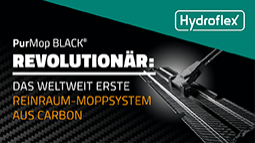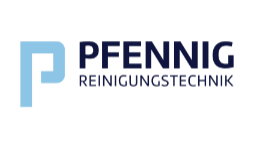The nano revolution
By Sarah Fister Gale
In the past few years, the nanotech revolution has gone from great ideas to commercial realization. Manufacturers across multiple industries, from pharmaceuticals and health care to coatings, semiconductors, and microelectronics, are recognizing the current and future impact nanomaterials can have on their products.
Nanomaterials offer great promise for a new generation of products because they deliver higher strength, lower weights, and more easily soluble attributes than have been previously seen in conventional materials.
?Nanotech isn?t a new market or industry?it?s an enabling technology that improves many types of products,? notes Jurron Bradley, senior analyst at Lux Research, a provider of strategic advice and intelligence for emerging technologies, based in New York. ?You find it in coatings boosting the efficiency of automobile engines, in nano-enabled finishes protecting electronic devices, and nanoparticulate reformulations that make cholesterol-reducing drugs more effective. These innovations aren?t always visible to consumers, but they improve products and boost margins. That?s why nanomaterials use is only going to keep growing.?
The market has seen recent rapid growth, with great expectations for the near future, says Bradley. In its recently released report, ?Nanomaterials State of the Market Q3 2008: Stealth Success, Broad Impact,? Lux estimates that nanotechnology was incorporated into $1.4 trillion worth of products in 2007, up from $497 billion in 2004, representing a compound annual growth rate of 41%. The research firm expects this figure to grow at a compound annual growth rate of 14% through 2015, climbing to $4.0 trillion worth of manufactured goods in that year.
The report notes that established nanotechnology?which includes nanoscale objects and devices based on long-known processes and technologies, such as semiconductor chips with nanometer features and nanoscale particles such as carbon black?dominates the current market, accounting for $1.3 trillion of the $1.4 trillion in nano-enabled manufacturing output in 2007. By 2015, Lux expects emerging nanotech?novel materials currently under development?to take center stage, accounting for $3.1 trillion of the $4.0 trillion in output.
The materials and manufacturing sector saw the greatest impact as nanotech made its way into intermediates like coatings and composites for products like automobiles and buildings; electronics followed at $35 billion from emerging nanotech applications in fields like displays and batteries, while health care trailed with $15 billion in revenue, driven by pharmaceutical applications.
?We are seeing a lot of growth in the electronics and IT sectors,? Bradley says. ?Manufacturers still have to prove the technology is viable, but they are seeing much greater acceptance.? ...
http://cr.pennnet.com/display_article/339456/15/ARTCL/none/Feat/1/The-nano-revolution/
But is it safe?
A flurry of attention-grabbing research reports and studies warning of the dangers of nanomaterials from special interests groups, such as the Project on Emerging Nanotechnologies and Friends of the Earth, have gained much media attention over the past couple of years, inciting fears among consumers about risky nanomaterials in their products and demanding caution from manufacturers unsure about whether to risk using a product that has potentially or perceived harmful consequences. Even as these materials are proved safe, public perception of risks can have lingering negative effects on marketability, particularly for products sold directly to consumers.
?There is still a lot of concern about nanoparticles,? notes Harry Way, technical director of Netzsch Fine Particle Technologies, a manufacturer of advanced process technology for nanomaterials based in Exton, PA. ?In reality, though, we?ve all been exposed to nanoparticles for as long as we?ve been burning things.? ?
http://cr.pennnet.com/display_article/339456/15/ARTCL/none/Feat/1/The-nano-revolution/
Under control
While standards bodies are evaluating and defining safety and measurement issues, companies such as Unidym Inc. in Menlo Park, CA, are developing their own internal methods to monitor and control nanomaterials in the manufacturing environment. Unidym manufactures high-purity, electronics-grade CNTs that range from 2 to 5 μm long, using an in-house, fully scalable, and proprietary chemical vapor deposition (CVD) production process.
?The original challenge with carbon nanotubes was availability,? says Glen Irvin, vice president of products, who notes that Unidym has been able to achieve commercial-scale production using a CVD process that involves mixing a carbon-containing gas with a metal-catalyst-coated substrate at a high temperature. The carbon atoms separate from the hydrocarbon gas and attach to the catalyst particles and other carbon atoms to form high-quality nanotubes. ... http://cr.pennnet.com/display_article/339456/15/ARTCL/none/Feat/1/The-nano-revolution/
Filter challenges
Not every manufacturer is as far along as Unidym or Entegris in its ability to create and control nanoscale materials at a commercial level, notes Glen Fricano, vice president of business development for Infotonics, a non-profit organization promoting commercial-scale MEMS/NEMS microsystems development, fabrication, and packaging in Canandaigua, NY.
?The biggest challenge a lot of manufacturers face is around filtration systems,? he says. ?Existing filtration technology doesn?t stop nanoparticles from getting through. The pore size is simply not small enough.?
This is particularly true of water filtration systems. If nanoparticles of silicon can?t be filtered out, manufacturers face barriers to recycling and disposal of process water, as well as risks to delicate nano-based electronics that can become contaminated by rogue particulates.
Fricano notes that many filter companies are working to develop better filters for nanomaterials that can screen out nano-
scale particles. ?
http://cr.pennnet.com/display_article/339456/15/ARTCL/none/Feat/1/The-nano-revolution/
Looking ahead
In the next few years, nanomaterials will become commonplace in cleanroom operations, leaving manufacturers to figure out the best strategies for handling them in ways that control costs and manage yields.
New standards and guidance from government agencies will help to guide this process, but in the meantime, suggests Unidym?s Irvin, companies can benefit from partnering with industry experts and learning lessons from existing cleanroom operations. ?
http://cr.pennnet.com/display_article/339456/15/ARTCL/none/Feat/1/The-nano-revolution/









